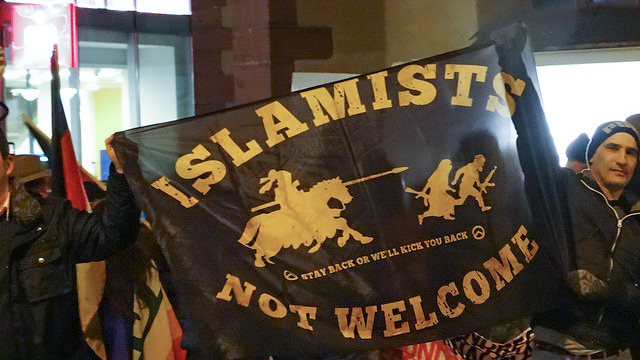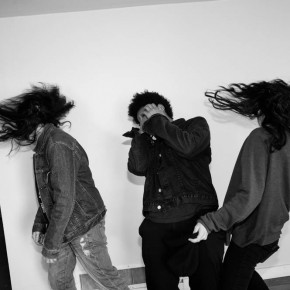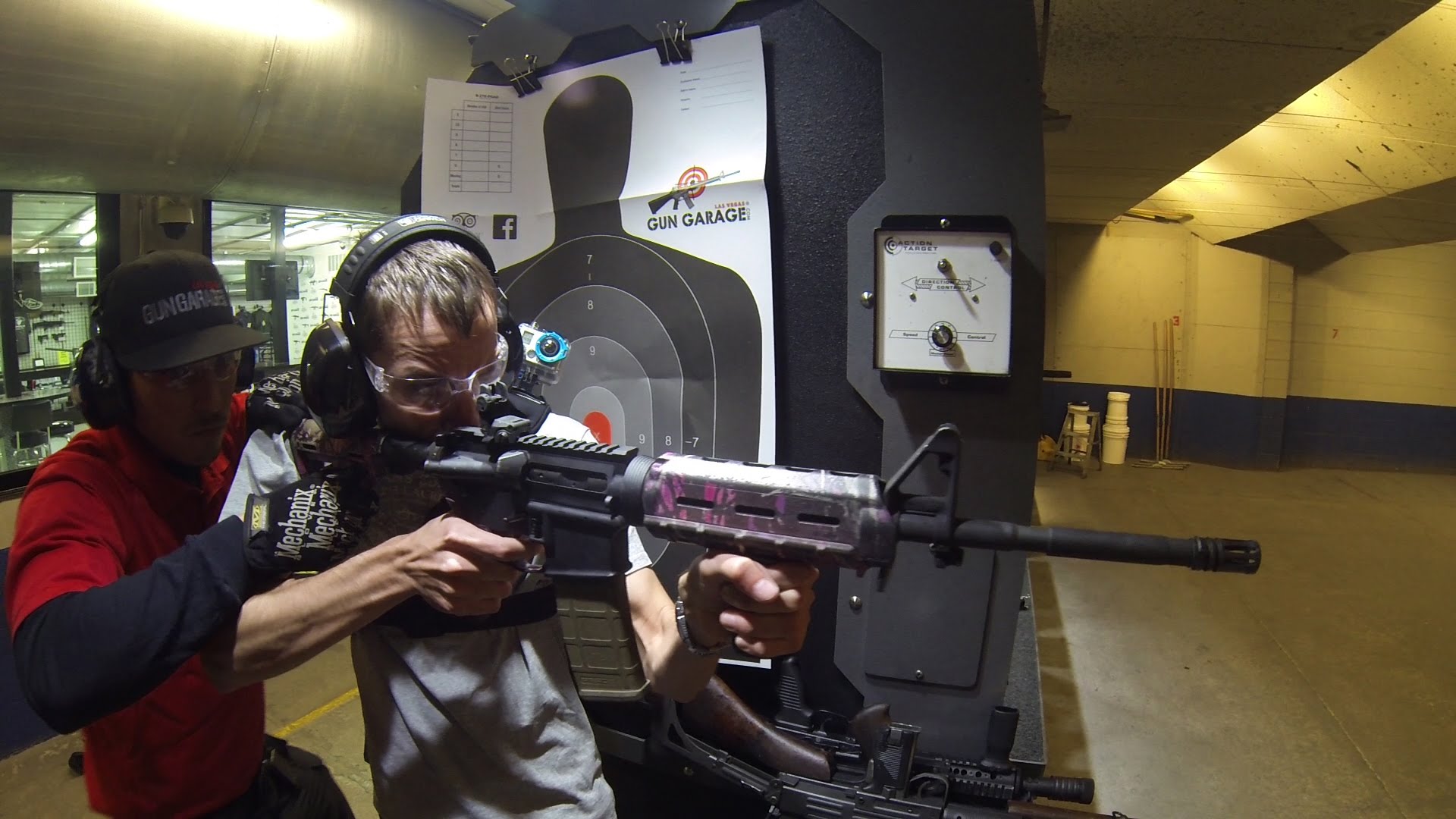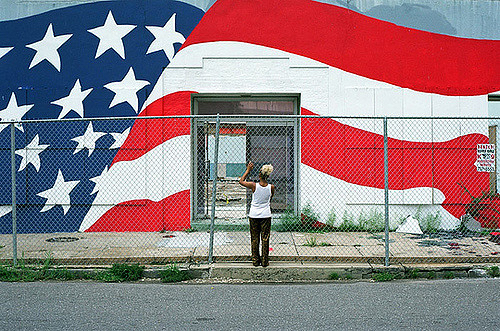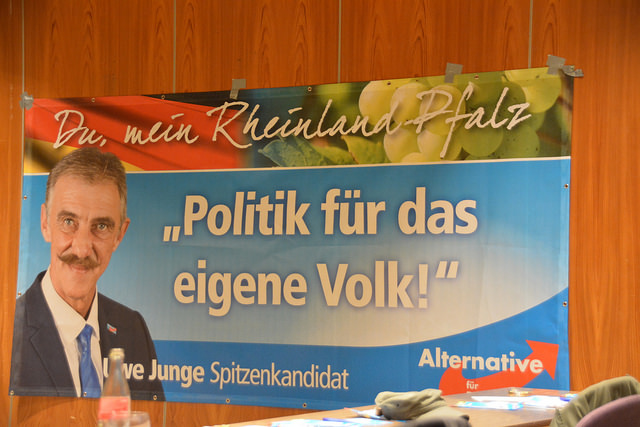Last week, I was standing behind a police barricade in Leipzig. Only yards away, but impossible to hear over the deafening noise of the counter-demonstration, hundreds of fascists were holding a rally. For an hour, we had been staring at the faceless mass of people on the other side, when suddenly a figure emerged and waved in our direction, taunting us. He began to unroll a flag: “Stop Nazis”, it said in big letters, with a big crossed-out swastika beneath it. It was a surreal, disorienting moment.
LEGIDA, the Leipzig branch of Dresden’s anti-Muslim PEGIDA-movement, is smaller but more militant than the original. Their marches used to attract thousands of people in the spring, but as winter approaches, and after almost a year of weekly demonstrations, only several hundred will still show up reliably. Which is still remarkable, if you consider that from November 9th until the 18th, there will be four different anti-refugee demonstrations in Leipzig alone.
Just before I joined the counter-demonstration, in a small town nearby, 80 people had blocked an arriving train filled with 700 refugees. The standoff with the police lasted all day. A Syrian refugee in a town closer to Dresden was hurt when a bomb went off outside his window. Two unoccupied houses designated for refugees went up in flames. In Magdeburg, three Syrian men were attacked by a gang of dozens of armed fascists. This all happened within a few days in Saxony, the heartland of the German anti-refugee movement. The violence, however, is not regional. That same weekend, two Syrians were beaten by dozens of armed men in northern Germany. According to reports, throughout the country, refugee houses are torched nearly every day.
So what does it mean if, in this context, someone at an anti-refugee demonstration waves a flag belonging to his enemies? Is that a fascist’s idea of a joke? Was he only trying to provoke ANTIFA leftists, or was he really an anti-fascist?
Especially in Germany, but I presume in most other places as well, there is a certain resistance to probing too deeply into the ideological universe of what are ultimately violent criminals. By taking their positions too seriously, we risk providing them with legitimacy. Everything that is outside of the acceptable spectrum of political opinion, everything that is guilty of being anti-democratic, racist, or anti-Semitic, we like to quickly label as “Nazi” – and rightly so, I might add.

In the context of contemporary German political discourse, the term “Nazi” has taken on a meaning that is both specific and free-floating: No longer refering only to the historical phenomenon of National Socialism, it has come to stand for anything that is outside of even the most conservative Overton window, any opinion which has become so unacceptable that it immediately disqualifies the person who holds it from public discussion. “Nazi” can therefore mean a lot of things, and it is subject to constant reinterpretation. It may not always be analytically the sharpest term, but it does one thing very effectively: Used as a polemical weapon, it disqualifies the holders of radical right-wing ideas from political discourse. And in any case, who really wants to split hairs with racist reactionaries over whether they are more accurately described as “ethnopurists,” “constitutional nationalists,” or any other such nonsense? They are Nazis, end of story.
And of course, let us not forget that there are indeed actual Nazis out there. Most of their parties and organizations may have realized by now that identifying as such is not only illegal, but also a losing strategy in the 21st century. But for most of them that means nothing more than covering up their swastika tattoos when attending an official function. Whenever one of their apartments is raided by the police, as is happening now, with some frequency, invariably very old-school Nazi paraphernalia will turn up among the guns and bombs.
In addition to these many neo-Nazis, there still exists a small, almost cultlike subculture in Germany which sees itself as direct, unreconstructed descendants of the historical Nazi movement. So let it not be said that Nazis are a thing of the past. For the average fascist, however, it is not necessarily a full adherence to Hitlerite ideology which makes them self-identify as a Nazi – it is rather the thrill of being, exactly that which is most reviled by the system he is in insurrection against (and his parents, more often than not). It is the pleasure, if you want, of performative Nazism.
It is this element of coded, playful, and provocative identification with the “Nazi”-label that is completely absent in most of the current anti-refugee protests. Instead, there are many different ways in which the protesters self-identify explicitly as anti-fascists. They have even appropriated the red and gold flag of the Stauffenberg anti-Nazi resistance movement, which can be seen on their marches almost as often as the official German national flag. Why?
Even if we take this professed anti-fascism as nothing but self-serving bullshit, or, as most antifascists will argue, a strategy of deception (“mimicry” is the term used in academic discourse), it is nonetheless reason for concern. The current reactionary upswing is in some ways, for example in its aim to topple the government, quite radical, but at the same time it refuses to self-identify as such, it refuses to be the voice of a marginal, revolutionary fringe. In many ways, it can genuinely claim to speak for at least large parts of the social center. Study after study has shown that there is huge authoritarian potential in Germany’s middle class, which is only for the moment muted by liberal social conventions and a general sense of approval with the current political situation.
Everywhere in Europe, as the economic crisis and our lost decade show no signs of ending, the middle classes are feeling threatened and betrayed by the political elites and the system as a whole. After years of stagnation and disappointment, and steeped in the harsh anti-solidarity discourse of neoliberalism, is it any wonder that they are losing faith in the system, and are beginning to aggressively lash out against both the more vulnerable as well as against the elites?

The fact that the anti-refugee movements successfully refused being branded as “Nazi” indicates that they are indeed speaking to a widespread discontent and alienation among the authoritarian parts of the middle-class. Simply attaching the “Nazi” label to them anyway, for example by meticulously comparing their rhetoric to National-Socialist ideology, or, in the case of the Alternative for Germany (AfD), tracing connections of leading party members to well-known neo-Nazi groups, may be an important tactic in demasking these movements. But it may also be a lazy way of dismissing these movements to easily, to not take them serious enough.
To their opponents, it may be simply more comfortable to believe that all the reactionary protesters are actually, secretly “Nazis,” and are only in drag as ordinary people. This makes them easier to oppose. In a similarly wishful move, we like to imagine these right-wingers as merely (East German) white trash – members of the stupid, provincial, badly dressed, alcoholic, uncouth, violent, and contemptible underclass.
But there is something sickening in this stereotype, in the facile way which plays to the social chauvinism of the educated, liberal middle class. (As one of the earnest left-wing speakers at the counter-demonstration said to his audience, which consisted of an estimated 80% university students: “This is going to sound chauvinist, and I know I should not say it, but maybe a little more education would have helped those people.” He got big laughs.)
Like the term “Nazi”, this stereotype of the fascist as an irrational, hopeless loser creates the idea that the rest of society, and especially its more educated strata, are more or less okay. It follows a bad precedent: Already during the National Socialist era, contempt for the “proletarian” Nazis was often a way of intellectually avoiding the fact that the Nazis had very strong roots in the upper classes. After all, there has always been a tendency in Western history to accept the cruelest social Darwinism if it was only put forward in a smooth upper-class voice. But with regards to the current protest movements, the stereotype is also simply not true. Sociological studies have shown clearly that the average anti-refugee protester in Dresden is a middle-aged man with an average (often university level) education, and without immediate economic difficulties.
These kind of average middle class people may not stalk the streets at night with a baseball bat, but they are the social base of reaction. What is troubling about the new reactionary movements in Germany is the fact that they are speaking to segments of the middle class that are deeply alienated from the political system and have no trust at at all in the media – but which are socially not marginalized at all. Which are, in fact, in socio-economic terms, perfectly ordinary.
There have long been hints that at least parts of the German middle class felt resentful towards what they saw as a growing liberalism in German society. But with Merkel’s CDU on a centrist course, and no party to speak for them except on the very extreme right, they generally kept to a quiet, resentful grumbling against the “tyranny of political correctness.” Only recently, as alternative right-wing media especially on the internet have proliferated, they seem to have found their voice. And thousands of bourgeoning right-wing activists have suddenly realized that they are not alone, that they may even become powerful.
Photographs courtesy of Opposition24.de and Metropolico.org. Published under a Creative Commons license.
